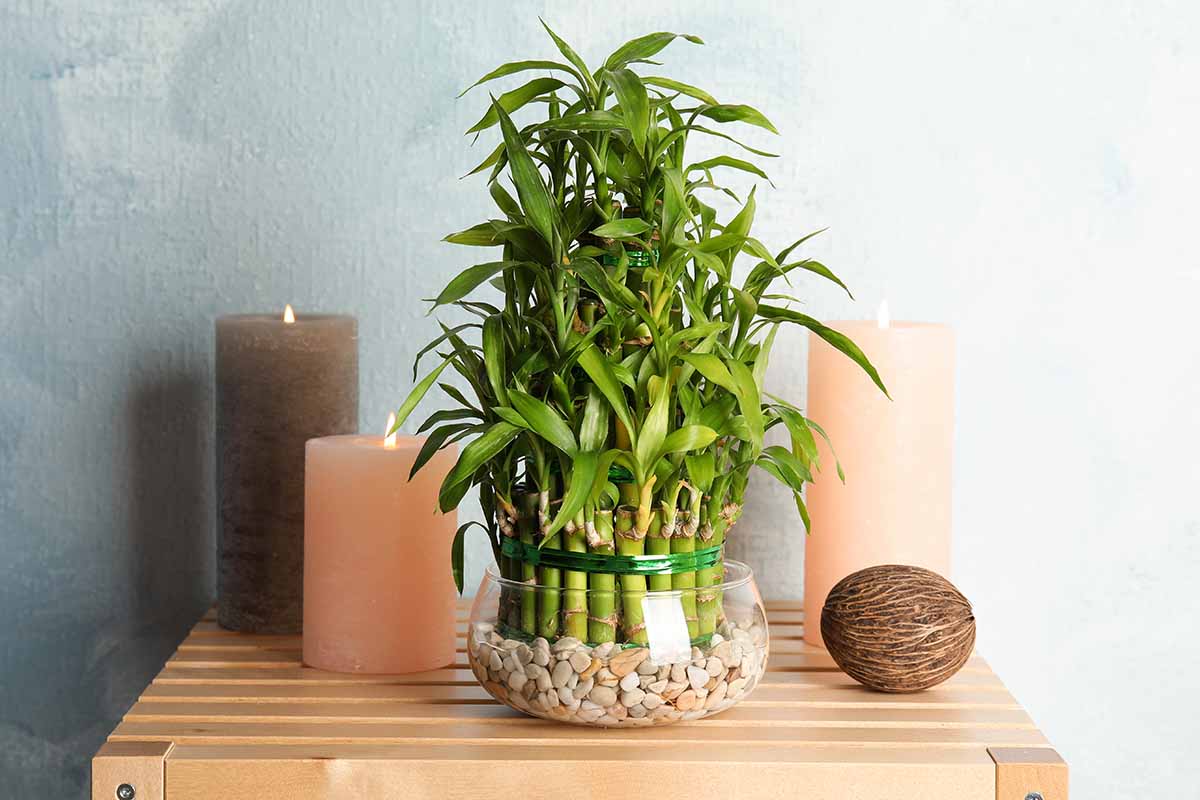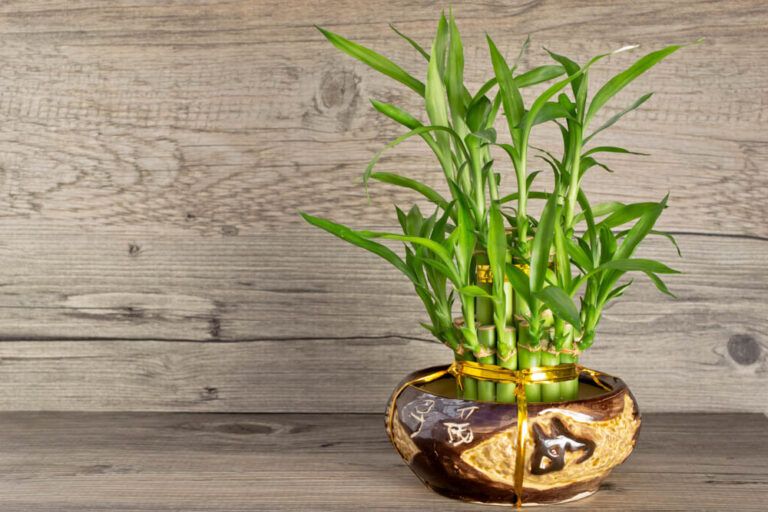Unlocking the Secrets of Lucky Bamboo Care
Lucky bamboo, also known as Dracaena sanderiana, has been a symbol of good fortune and prosperity in many cultures for centuries. This low-maintenance, adaptable plant is not only aesthetically pleasing, but it also has the ability to purify the air and bring a sense of calm to any space. Whether you’re looking to attract positive energy to your home or office, or simply want to add some greenery to your decor, lucky bamboo is an excellent choice. In this article, we’ll explore the benefits of having lucky bamboo in your space and provide a comprehensive guide on how to plant and care for this incredible plant.
One of the most significant advantages of lucky bamboo is its ability to thrive in a variety of environments. It can survive in low-light conditions, making it an ideal choice for rooms with limited natural light. Additionally, lucky bamboo is a natural air purifier, removing toxins and pollutants from the air and promoting a healthier environment. By incorporating lucky bamboo into your space, you can create a more peaceful and serene atmosphere, perfect for relaxation and focus.
When it comes to attracting good fortune, lucky bamboo is believed to have a profound impact. In many Asian cultures, lucky bamboo is thought to bring prosperity, wealth, and good luck to those who care for it. By following the simple steps outlined in this article, you can learn how to plant lucky bamboo and harness its positive energy in your own life. Whether you’re looking to improve your relationships, career, or overall well-being, lucky bamboo is an excellent addition to any space.
With its numerous benefits and low-maintenance requirements, it’s no wonder why lucky bamboo has become a popular choice for plant enthusiasts and those looking to attract positive energy. By understanding the basics of lucky bamboo care and following the steps outlined in this article, you can unlock the secrets of this incredible plant and start enjoying its many benefits. So, let’s get started on our journey to learn how to plant lucky bamboo and harness its power to improve our lives.
Choosing the Right Lucky Bamboo Plant for You
When it comes to selecting a lucky bamboo plant, there are several factors to consider. With various sizes, shapes, and colors available, choosing the right plant can be overwhelming. However, by understanding the different types of lucky bamboo plants and what to look for when purchasing, you can make an informed decision and find the perfect plant for your space.
One of the most common types of lucky bamboo plants is the straight-stemmed variety. This type of plant is ideal for those who want a more traditional look and is often used in Asian-inspired decor. Another popular variety is the twisted-stemmed lucky bamboo, which adds a unique and interesting element to any room.
In addition to the different stem styles, lucky bamboo plants also come in a range of sizes. From small, desktop plants to larger, floor-standing varieties, there is a lucky bamboo plant to suit any space. When choosing a plant, consider the size of the area where the plant will be placed and select a plant that is proportional to the space.
When purchasing a lucky bamboo plant, it’s essential to select a healthy plant. Look for plants with bright green leaves and sturdy stems. Avoid plants with yellowing or brown leaves, as this can be a sign of poor health. Also, check the roots of the plant to ensure they are not rotting or damaged.
By considering the different types of lucky bamboo plants and what to look for when purchasing, you can find the perfect plant for your space. Whether you’re looking for a small, low-maintenance plant or a larger, more dramatic statement piece, there is a lucky bamboo plant to suit your needs. In the next section, we’ll discuss how to prepare the perfect environment for your lucky bamboo plant to thrive.
Preparing the Perfect Environment for Your Lucky Bamboo
Creating the right environment for your lucky bamboo plant is crucial for its growth and well-being. By providing the ideal conditions, you can help your plant thrive and enjoy its many benefits. In this section, we’ll discuss the importance of lighting, temperature, humidity, container, and soil in creating the perfect environment for your lucky bamboo plant.
Lighting is one of the most critical factors in creating the right environment for your lucky bamboo plant. Lucky bamboo plants prefer bright, indirect light but can tolerate low light conditions. However, direct sunlight can cause the leaves to become scorched, so it’s essential to provide filtered light. East- or west-facing windows are ideal for lucky bamboo plants.
Temperature is another crucial factor in creating the right environment for your lucky bamboo plant. Lucky bamboo plants prefer temperatures between 65°F to 75°F (18°C to 24°C). Avoid placing your plant near heating or cooling vents, fireplaces, or drafty windows, as this can cause temperature fluctuations.
Humidity is also essential for lucky bamboo plants. These plants prefer a humid environment, typically between 40% to 60% relative humidity. To maintain the right humidity level, you can place the plant on a tray filled with water and pebbles or use a humidifier.
When it comes to containers, lucky bamboo plants prefer well-draining pots to prevent waterlogged soil. Choose a container that is slightly larger than the plant’s root system, and make sure it has drainage holes to prevent water from accumulating.
Soil is also a critical factor in creating the right environment for your lucky bamboo plant. Lucky bamboo plants prefer a well-draining, fertile soil that is rich in organic matter. A mix of peat moss, perlite, and vermiculite is ideal for lucky bamboo plants.
By providing the right environment for your lucky bamboo plant, you can help it thrive and enjoy its many benefits. In the next section, we’ll discuss how to plant lucky bamboo, including how to trim the roots, prepare the soil, and care for the plant after planting.
A Step-by-Step Guide to Planting Lucky Bamboo
Planting lucky bamboo is a relatively simple process that requires some basic care and attention. By following these steps, you can ensure that your lucky bamboo plant gets off to a healthy start and thrives in its new environment.
Step 1: Trim the Roots – Before planting your lucky bamboo, it’s essential to trim the roots to prevent them from becoming waterlogged. Use a pair of clean scissors or pruning shears to trim the roots, making sure to cut just above a node (the joint where the leaf meets the stem).
Step 2: Prepare the Soil – Lucky bamboo plants prefer well-draining soil that is rich in organic matter. Mix a small amount of fertilizer into the soil to provide essential nutrients for your plant.
Step 3: Plant the Lucky Bamboo – Gently place the lucky bamboo plant into the soil, making sure the node (where you trimmed the roots) is above the soil level. Firm the soil around the plant to secure it in place.
Step 4: Water the Plant – Water your lucky bamboo plant thoroughly after planting, making sure the soil is moist but not waterlogged. Check the soil daily to ensure it doesn’t dry out.
Step 5: Provide Humidity – Lucky bamboo plants prefer a humid environment, typically between 40% to 60% relative humidity. To maintain the right humidity level, you can place the plant on a tray filled with water and pebbles or use a humidifier.
Step 6: Monitor and Adjust – Keep an eye on your lucky bamboo plant’s condition, adjusting the lighting, temperature, and humidity levels as needed. With proper care and attention, your lucky bamboo plant should thrive and bring good fortune to your space.
By following these simple steps, you can learn how to plant lucky bamboo and enjoy its many benefits. Remember to provide the right environment, trim the roots, prepare the soil, plant the lucky bamboo, water the plant, provide humidity, and monitor and adjust as needed.
Watering and Fertilizing Your Lucky Bamboo Plant
Proper watering and fertilizing techniques are crucial for the health and well-being of your lucky bamboo plant. By understanding how to water and fertilize your plant correctly, you can ensure it receives the necessary nutrients to thrive.
Watering Your Lucky Bamboo Plant – Lucky bamboo plants prefer moist soil, but make sure not to overwater. Check the soil daily, and water only when the top inch of soil feels dry to the touch. Use a watering can or cup to water your plant, and avoid getting water on the leaves or crown to prevent rot.
Fertilizing Your Lucky Bamboo Plant – Lucky bamboo plants benefit from regular fertilization. Use a balanced, water-soluble fertilizer (20-20-20) and dilute it to half the recommended strength. Fertilize your plant once a month, and avoid fertilizing during the winter months when the plant is dormant.
Determining the Right Amount of Water and Fertilizer – The right amount of water and fertilizer for your lucky bamboo plant depends on the size of the plant, the temperature, and the humidity. As a general rule, water your plant when the top inch of soil feels dry, and fertilize once a month.
How Often to Water and Fertilize – Water your lucky bamboo plant daily, but only when the top inch of soil feels dry. Fertilize your plant once a month, and avoid fertilizing during the winter months.
Common Mistakes to Avoid – Overwatering and underwatering are common mistakes people make when caring for lucky bamboo plants. Make sure to check the soil daily, and water only when necessary. Also, avoid fertilizing too frequently, as this can cause more harm than good.
By following these simple watering and fertilizing techniques, you can ensure your lucky bamboo plant receives the necessary nutrients to thrive. Remember to water daily, fertilize monthly, and avoid common mistakes to keep your plant healthy and happy.
Common Mistakes to Avoid When Caring for Lucky Bamboo
While lucky bamboo plants are relatively low-maintenance, there are some common mistakes to avoid when caring for them. By being aware of these mistakes, you can ensure your plant stays healthy and thrives.
Over-Watering – One of the most common mistakes people make when caring for lucky bamboo plants is over-watering. This can cause the roots to rot, leading to a range of problems, including yellowing leaves and a weakened plant. To avoid over-watering, check the soil daily and only water when the top inch of soil feels dry.
Under-Watering – On the other hand, under-watering can also be detrimental to your lucky bamboo plant. If the soil is too dry for an extended period, the plant may become stressed, leading to a range of problems, including leaf drop and a weakened plant. To avoid under-watering, make sure to water your plant regularly, but avoid getting water on the leaves or crown.
Insufficient Light – Lucky bamboo plants prefer bright, indirect light, but some people make the mistake of placing them in low-light conditions. This can cause the plant to become leggy and weak, leading to a range of problems. To avoid this, place your lucky bamboo plant in a spot with bright, indirect light, such as an east- or west-facing window.
Incorrect Temperature – Lucky bamboo plants prefer temperatures between 65°F to 75°F (18°C to 24°C), but some people make the mistake of placing them in areas with extreme temperatures. This can cause the plant to become stressed, leading to a range of problems. To avoid this, place your lucky bamboo plant in a spot with a consistent temperature between 65°F to 75°F (18°C to 24°C).
By being aware of these common mistakes, you can ensure your lucky bamboo plant stays healthy and thrives. Remember to avoid over-watering, under-watering, insufficient light, and incorrect temperature, and your plant will reward you with its beauty and good fortune.
Pruning and Propagating Lucky Bamboo for Optimal Growth
Pruning and propagating lucky bamboo plants are essential for maintaining their shape and promoting healthy growth. By pruning your lucky bamboo plant regularly, you can encourage new growth, prevent overgrowth, and maintain the plant’s natural shape.
Why Prune Lucky Bamboo? – Pruning lucky bamboo plants helps to maintain their shape, promote healthy growth, and encourage new shoots to grow. It also helps to prevent overgrowth, which can lead to a range of problems, including yellowing leaves and a weakened plant.
How to Prune Lucky Bamboo – To prune lucky bamboo, use a pair of clean scissors or pruning shears to cut off any dead or damaged leaves or stems. Cut just above a node (the joint where the leaf meets the stem), and make sure to leave at least two nodes on each stem to encourage new growth.
Propagating Lucky Bamboo – Propagating lucky bamboo plants is a great way to share plants with friends and family, or to create new plants for your own home or office. To propagate lucky bamboo, cut off a healthy stem section, remove any lower leaves, and plant it in a new pot filled with water or soil.
Step-by-Step Instructions for Pruning and Propagating Lucky Bamboo – Here are some step-by-step instructions for pruning and propagating lucky bamboo:
1. Choose a healthy stem section with at least two nodes.
2. Cut off the stem section just above a node using a pair of clean scissors or pruning shears.
3. Remove any lower leaves from the stem section.
4. Plant the stem section in a new pot filled with water or soil.
5. Place the pot in a bright, indirectly lit area, and keep the soil or water moist.
By following these steps, you can prune and propagate your lucky bamboo plant to maintain its shape and promote healthy growth.
Troubleshooting Common Problems with Lucky Bamboo Plants
Despite their low-maintenance requirements, lucky bamboo plants can still experience problems. By being aware of these common issues and knowing how to troubleshoot them, you can keep your plant healthy and thriving.
Yellowing Leaves – Yellowing leaves are a common problem with lucky bamboo plants. This can be caused by over-watering, under-watering, or exposure to direct sunlight. To resolve this issue, adjust your watering schedule and ensure your plant is receiving bright, indirect light.
Pests – Pests, such as spider mites and mealybugs, can infest lucky bamboo plants. To resolve this issue, isolate your plant, and treat it with insecticidal soap or neem oil.
Root Rot – Root rot is a common problem with lucky bamboo plants, caused by over-watering. To resolve this issue, repot your plant in fresh soil, and adjust your watering schedule.
Leaf Drop – Leaf drop is a common problem with lucky bamboo plants, caused by under-watering or exposure to direct sunlight. To resolve this issue, adjust your watering schedule, and ensure your plant is receiving bright, indirect light.
Tips for Troubleshooting Common Problems – Here are some tips for troubleshooting common problems with lucky bamboo plants:
1. Check your watering schedule to ensure you’re not over-watering or under-watering your plant.
2. Inspect your plant regularly for pests, and treat it promptly if you notice any infestations.
3. Adjust your plant’s lighting to ensure it’s receiving bright, indirect light.
4. Repot your plant in fresh soil if you notice any signs of root rot.
5. Monitor your plant’s temperature to ensure it’s within the ideal range.
By following these tips, you can troubleshoot common problems with lucky bamboo plants and keep your plant healthy and thriving.



:max_bytes(150000):strip_icc()/GettyImages-1136852637-8cb110bc2b4145b3a98cb1346037d2dc.jpg)



:max_bytes(150000):strip_icc()/growing-lucky-bamboo-1902994-06-5e6baa99d24943258e26c04cbe15d308.jpg)
